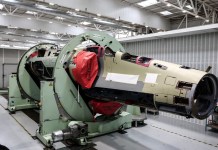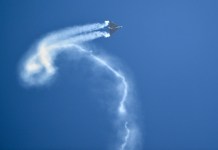The Bell helicopter company of the US is now looking to create ways to add “stealth” to its helicopters. While they acknowledge that the “stealthy” characteristics like the infrared (IR) heat suppressing systems and various fuselage contour constructions are some ways to make the new aircraft less detectable by enemies, it still can’t be put into the category of “stealth” aircraft yet.
Fearing China, Vietnam Seeks ‘Comprehensive Strategic Partnership’ With India
“We will definitely employ some passive measures in terms of how we shape the aircraft, to make it invisible. The key is not to be able to target it and reduce the signature passively so radar sweeps do not see anything. In the end, you do not want to get detected or engaged,” said Vince Tobin, vice president of advanced tiltrotor systems, Bell Helicopter, to Scout Warrior in an interview.
While it is difficult to add specifics regarding stealth technology, one of the few parameters that can be modified includes reducing the heat signature coming from engines or exhaust and to shape the exterior of the aircraft to be less detectable to “pings” or return signals to enemy radar.
Kris Osborn of The National Interest explained that radar sends electromagnetic signals, pulses, or “pings” traveling at the speed of light – bounces them off of an object – and analyzes the return signal to determine the shape, size, and speed of an enemy target. For this reason, electronic “jamming” is another tactic used to thwart or throw off enemy radar systems.
Tobin added that they are looking for ways to overcome that heat signature. “A lot of new technologies that the engine companies are looking for include seeking the best ways to ensure maximum performance of the engine while using an IR suppressor.”

Bell now intends to take its successful and widely used by the American defense forces – Bell-Boeing V-22 Osprey, which is selected by the US Navy to conduct the Carrier-On-board Delivery (COD) mission moving troops, equipment and weapons on-and-off surface ships, and “all the demonstrators before that” and apply that to the next-generation tilt-rotor – V-280 Valor.
“It is a straight wing versus a V-22 which is not straight. This reduces complexity,” said Dan Bailey, JMR TD Program Manager, in an interview with Scout Warrior last year. “They are also building additional flapping into the rotor system and individual controls that should allow for increased low-speed maneuverability.”
V-280 Valor which was unveiled at the 2013 Army Aviation Association of America’s Annual Professional Forum and Exposition in Fort Worth, Texas, will have a speed of 280 KTAS and a combat range of 500-800 nm.
It will also have a high-tech 360-degree sensor suite quite similar to the one used on the F-35 Joint Strike Fighter called a Distributed Aperture Systems, or DAS, developers explained.
“Instead of having sensors mounted to the turret, you have sensors that are mounted to the aircraft – so essentially you have sensors staring in 360-degrees around the aircraft at any given time. Those images are stitched together so it appears as one continuous image to the pilot. Both pilots can make use of the same system,” Tobin said.
The Bell’s V-280 Valor tiltrotor aircraft completed a successful autonomous test flight in December 2019. It is a part of the Army’s Joint Multi-Role Technology Demonstrator program aimed at ascertaining requirements and paving the way toward a new Future Vertical Lift aircraft designed to meet a wide range of new requirements.
“We are looking to the United States Department of Defense (DoD) customer to see what they want. Either way, we can get that on the airplane,” Tobin said.




